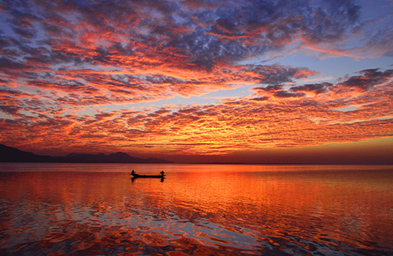When a male river flows....
Nava Thakuria
They say there is only one male river (rivers are considered female in India) and that is in Tibetan highland. Of course, the name itself identifies it as the son of Lord Brahmā, the creator of the Universe according to the Hindu mythology. Brahma’s son (Putra) is known as Brahmaputra, the sacred river that emerges as a unique identity for the people of Assam. Even though Brahmaputra is an international river connecting Tibet (now under China), India and Bangladesh, it is omnipresent in the great Assamese literarycultural pieces. Often the mighty river is termed as Luit in Assamese literature, which Assam’s greatest son in recent time Dr Bhupen Hazarika described as Burha (literary meaning old) Luit also. Many of the immortal creations of Dr Hazarika are related to Brahmaputra (pronounced in Assamese as Brôhmôputrô). In different songs, the legendary singer terms the river as a symbol of greatness, harmony and assimilation. Sometime, the celebrated music composer also questioned Mohabahu Brahmaputra ‘why does it flow in spite of the endless sufferings of dwellers on both of its banks’.
The powerful river originates in Jima Yangzong glacier of the Himalayan State of Tibet (at an elevation of about 5150 meter), flows across southern Tibet and enters into Arunachal Pradesh and then flows southwest through the Assam valley to penetrate into Bangladesh. Finally the gigantic river culminates in the Bay of Bengal after merging with Padma (also known as Podda) and Meghna river. Identified as one of the major rivers of Asia (world’s fourth largest), Brahmaputra is known as Tsangpo in Tibet (Yarlung Zangbo in Chinese), Siang or Dihang in Arunachal, Jomuna (not Yamuna of north India) in northern Bangladesh. It covers nearly 2,900 kilometer and embraces the basin area of around 651,300 square km. The river, occasionally adored as a sea, discharges average 19,300 cubicmeter volume of water per second.



